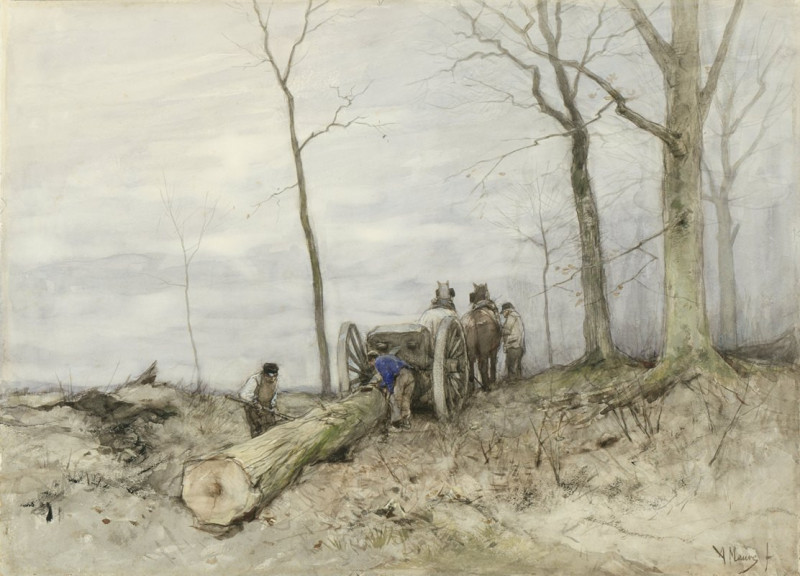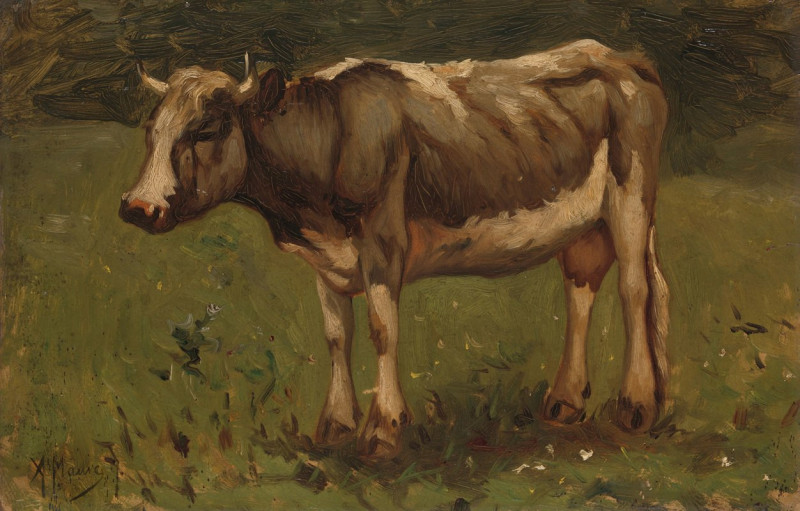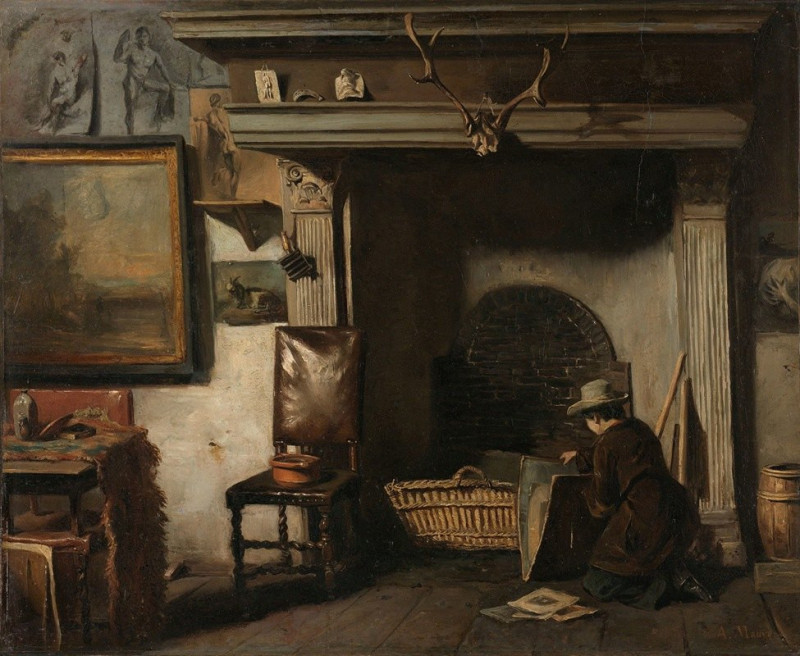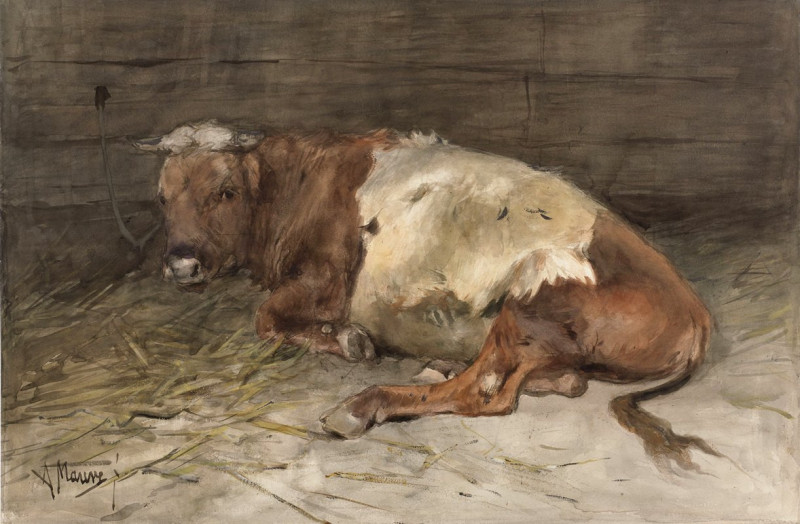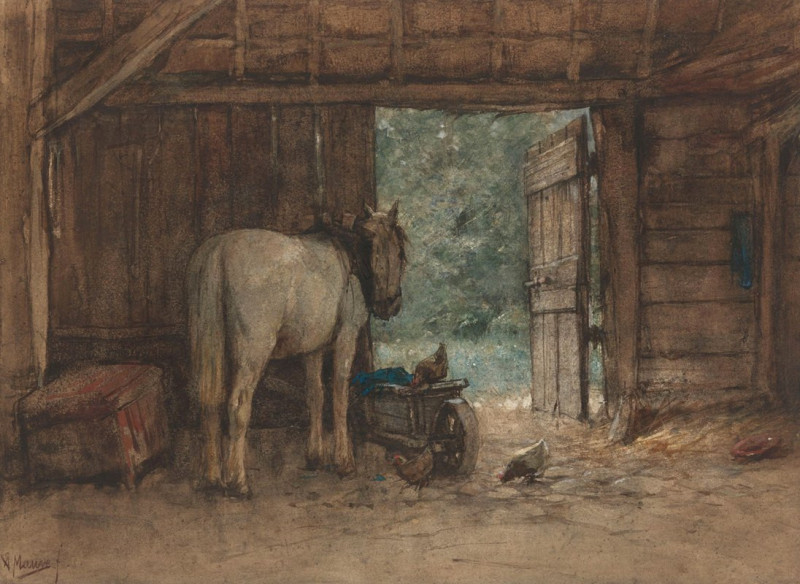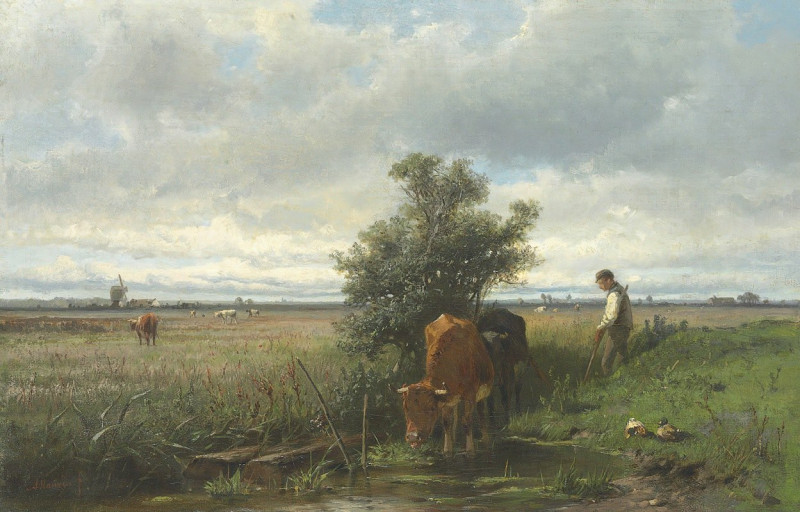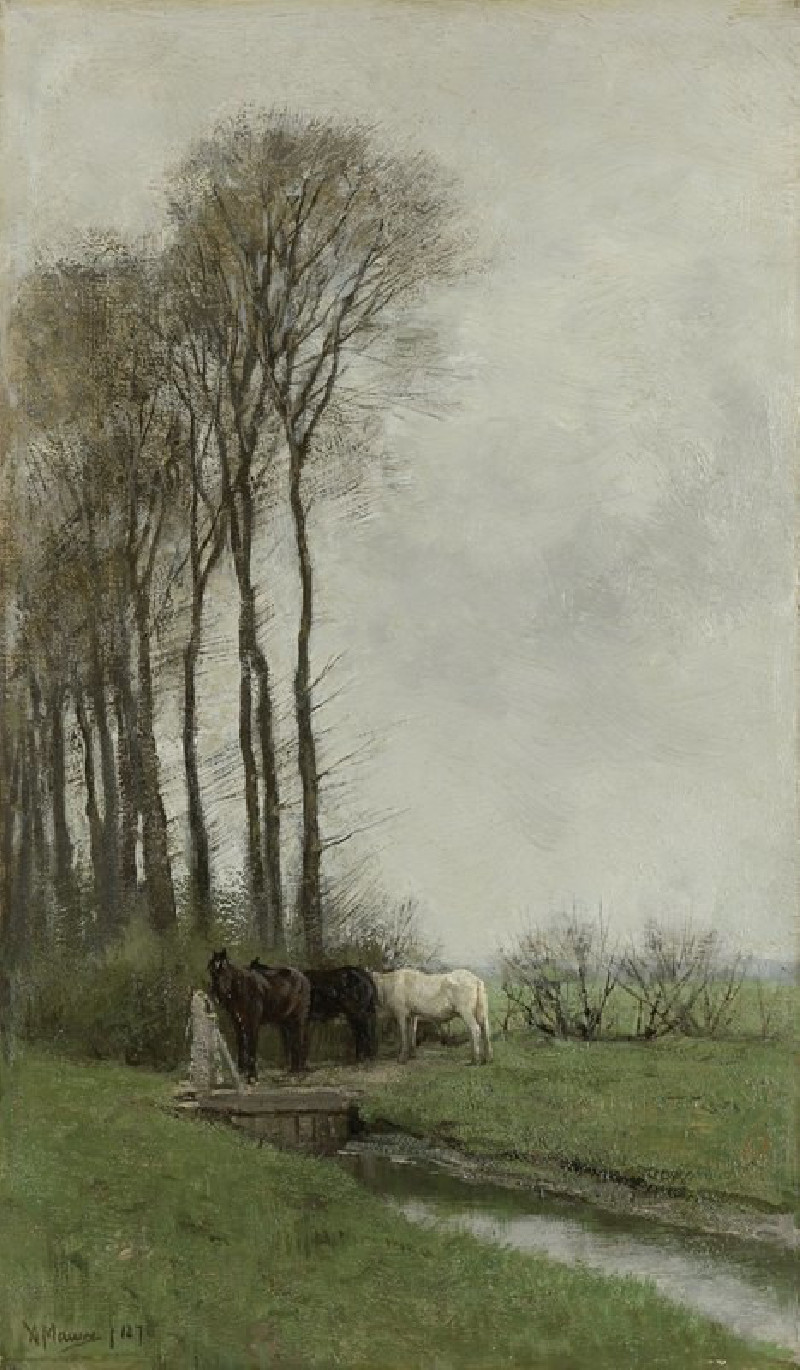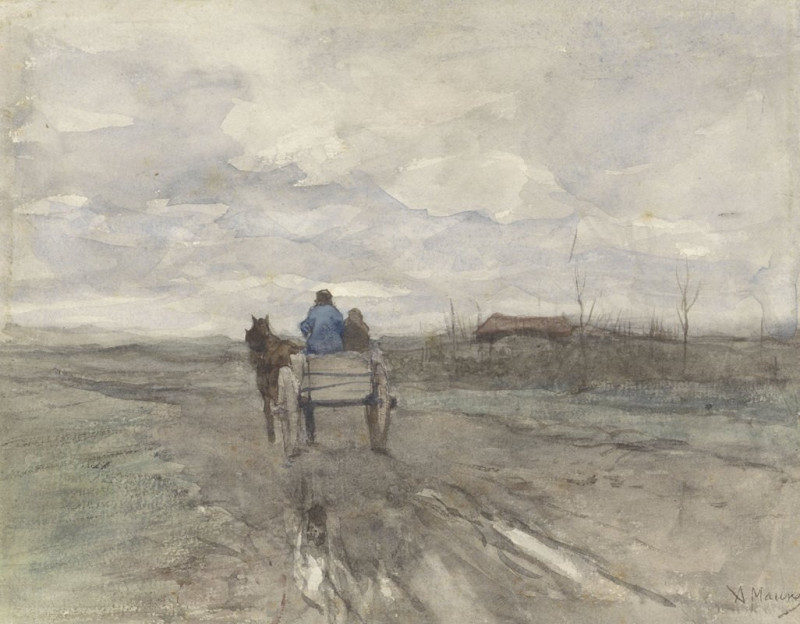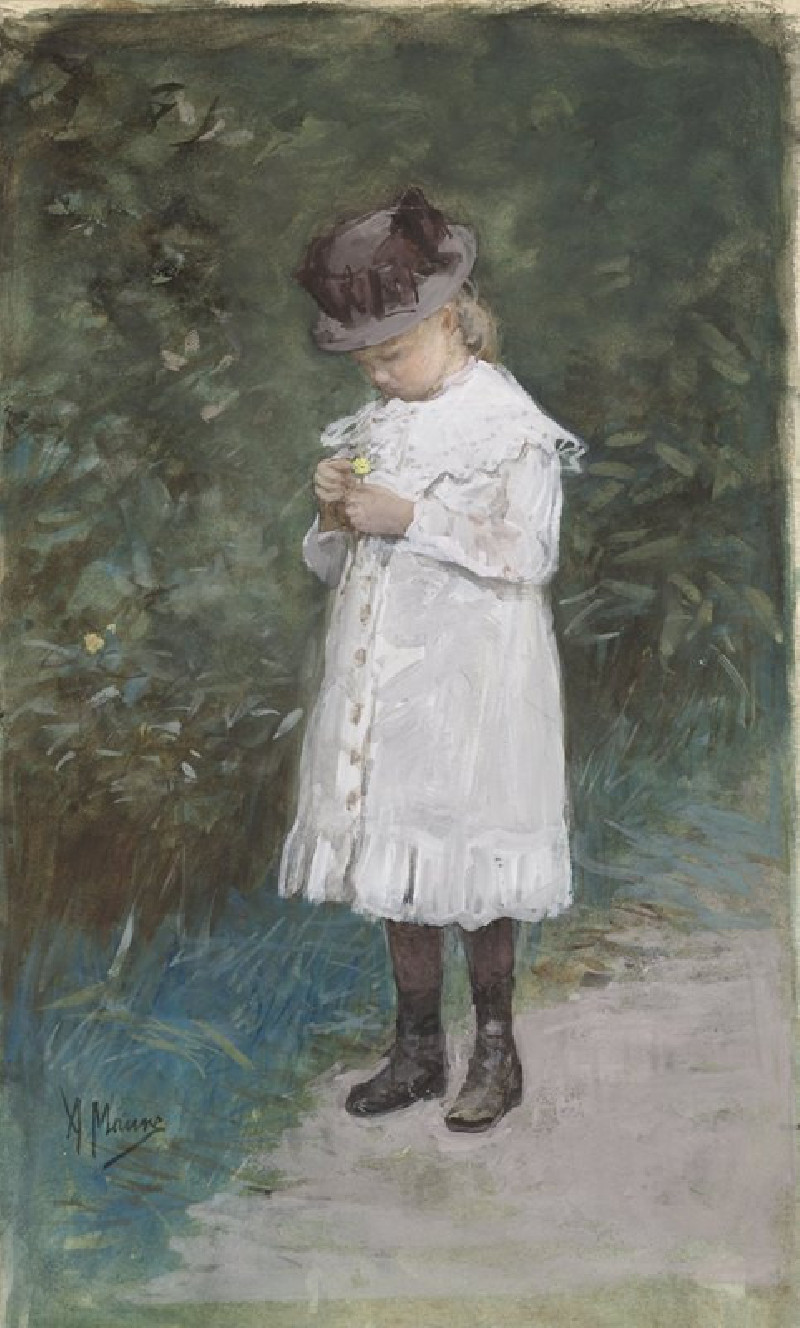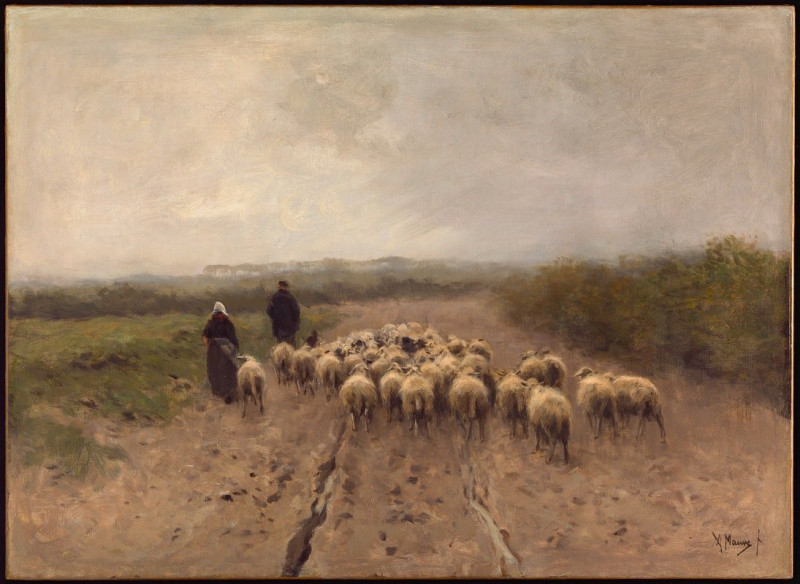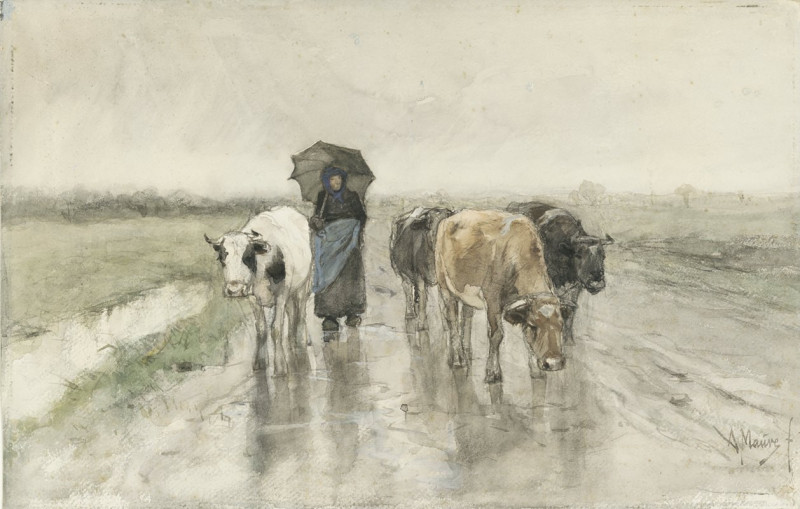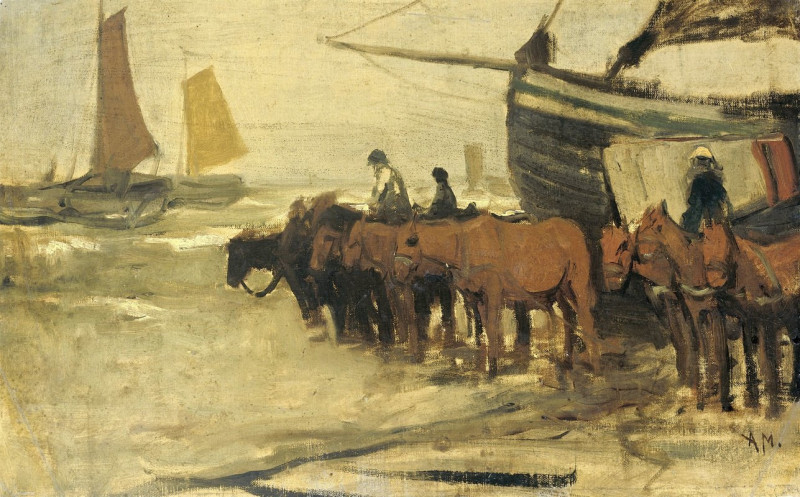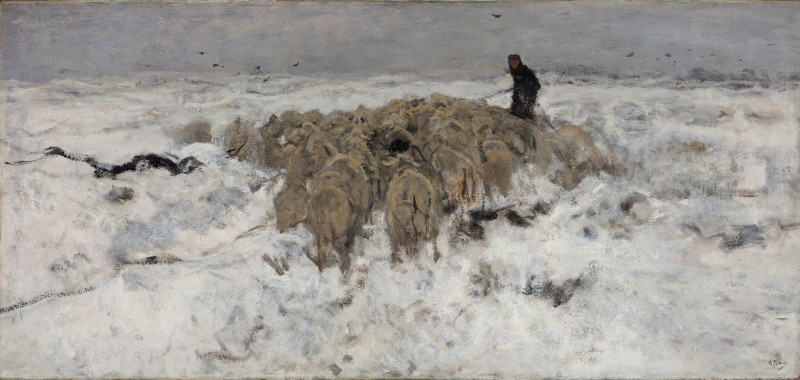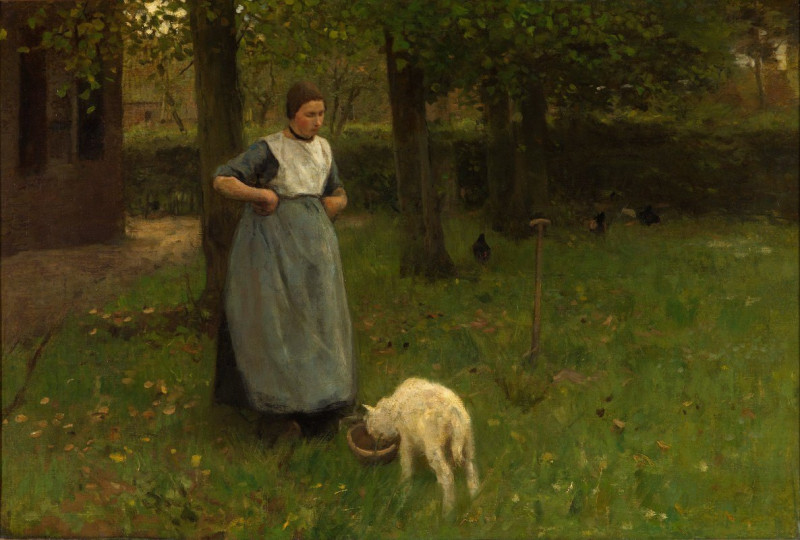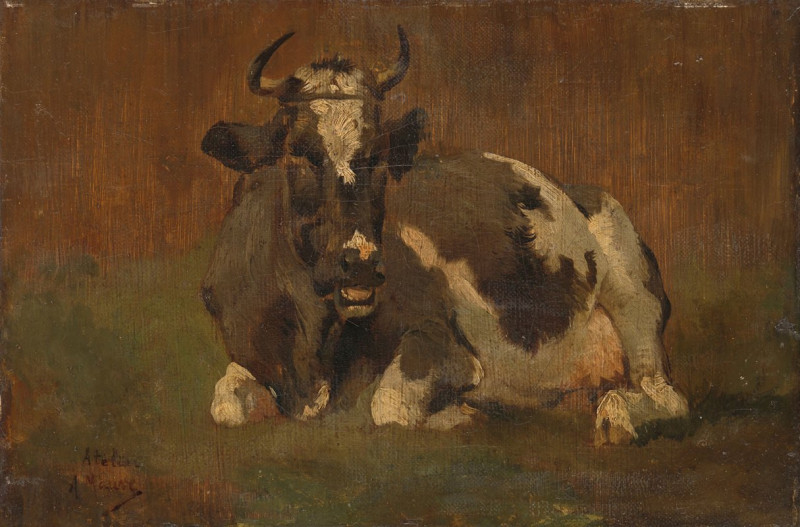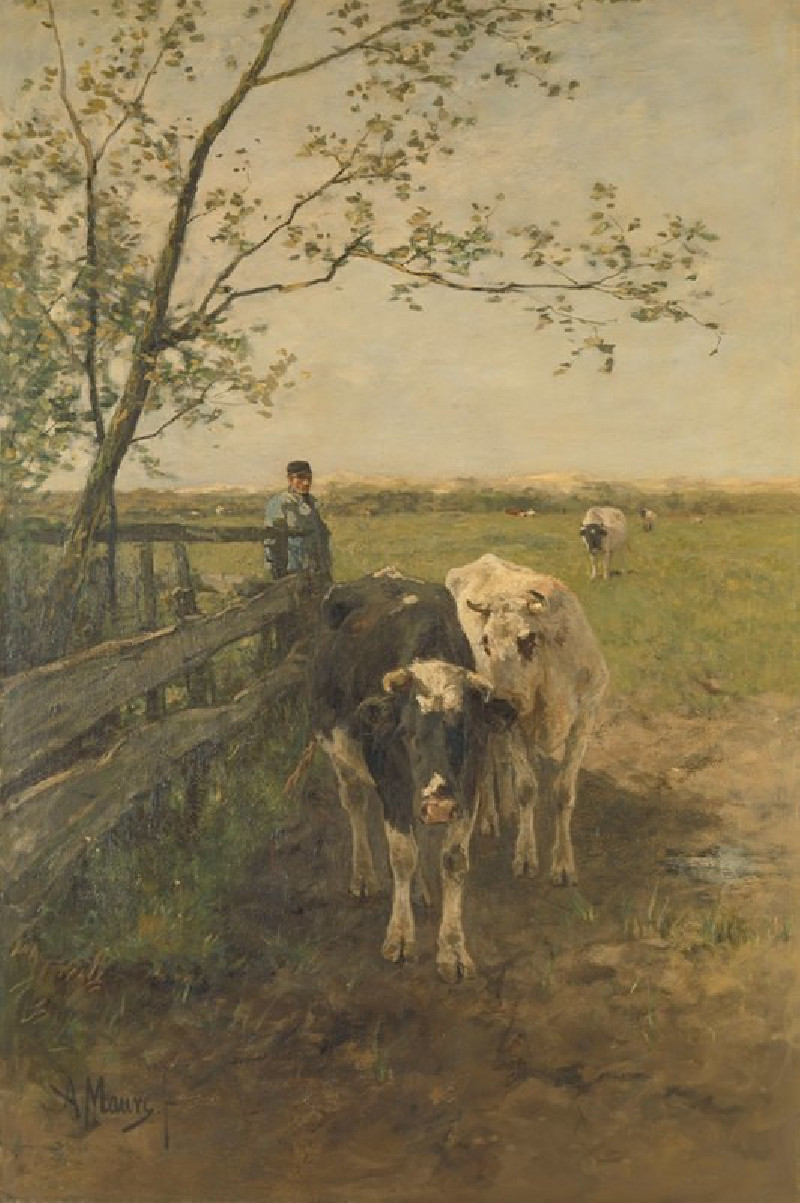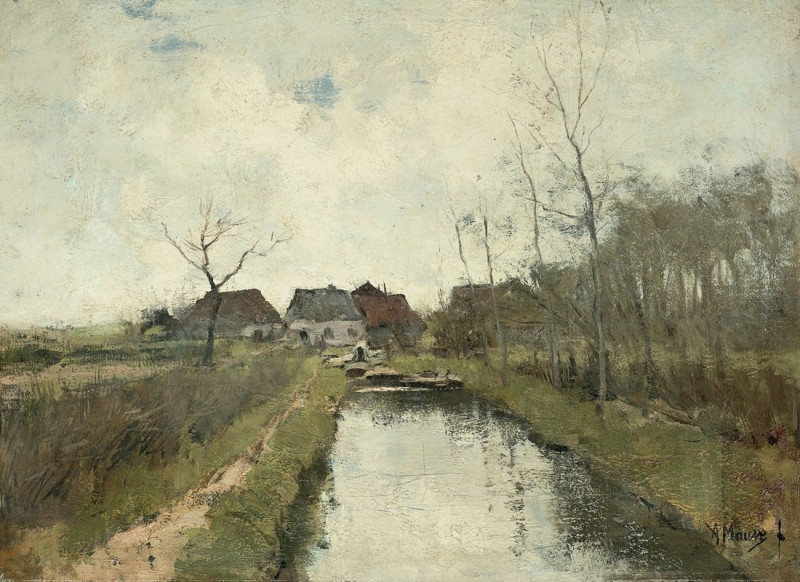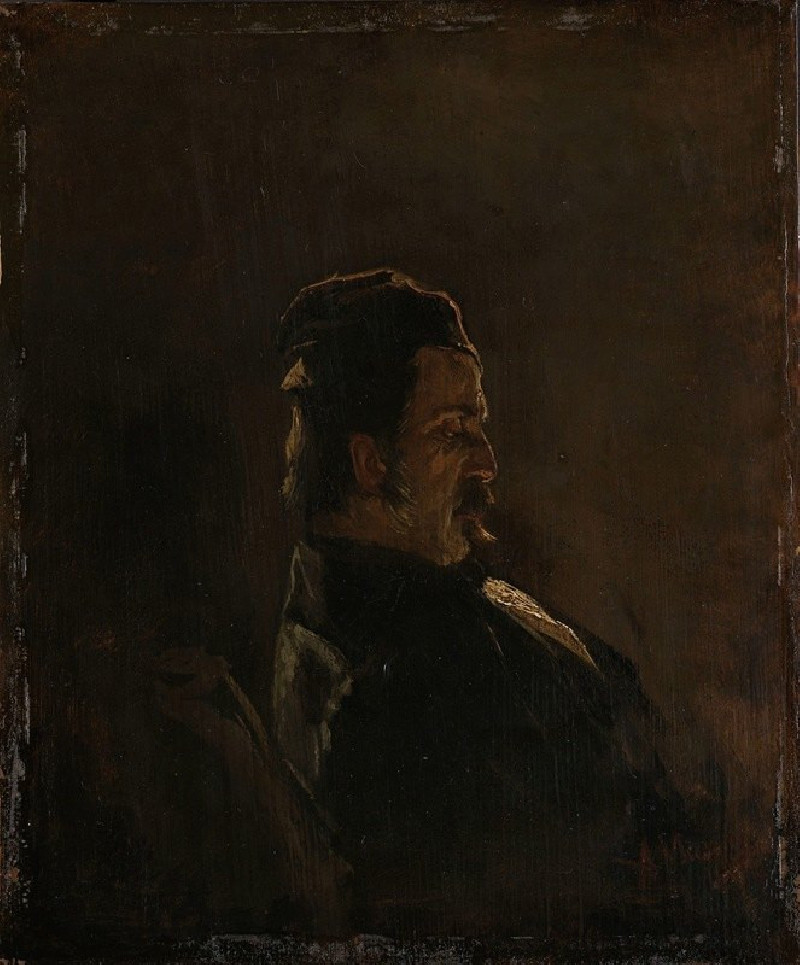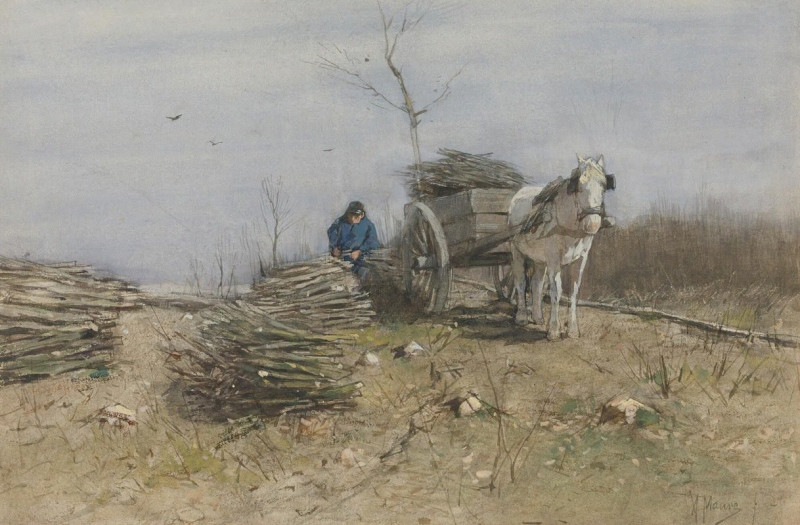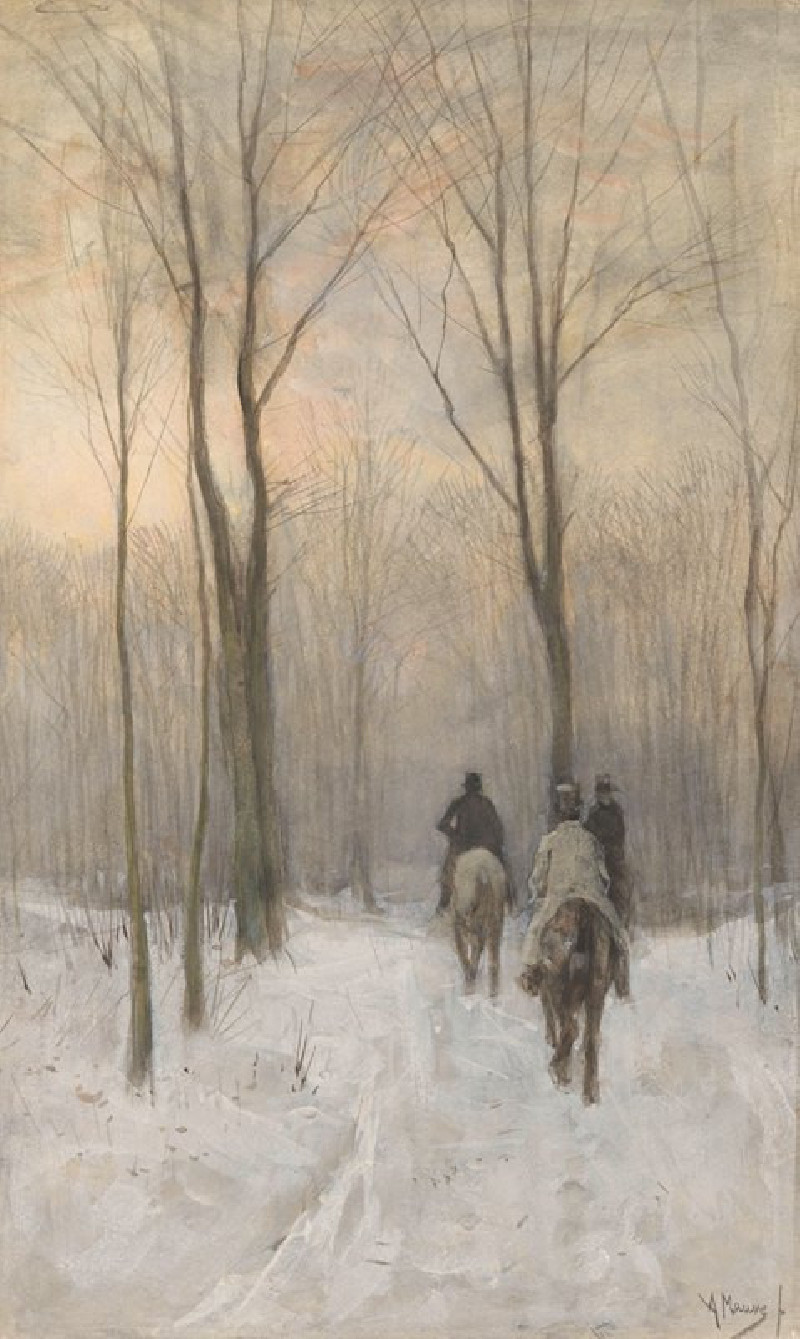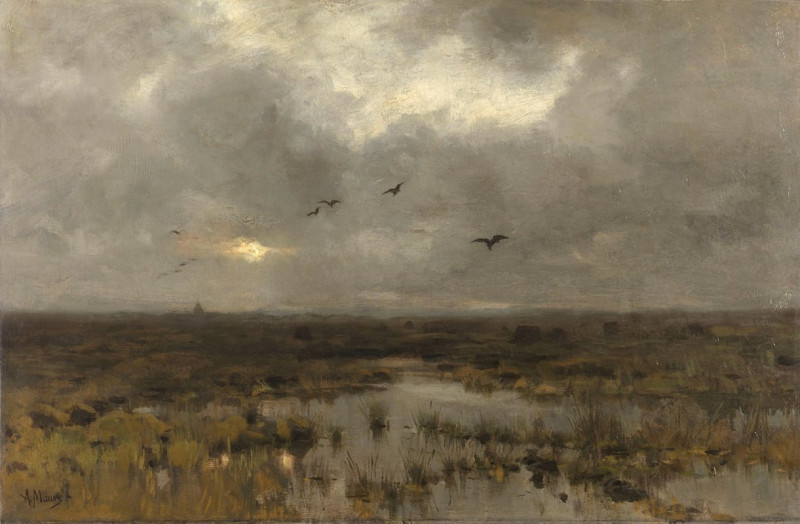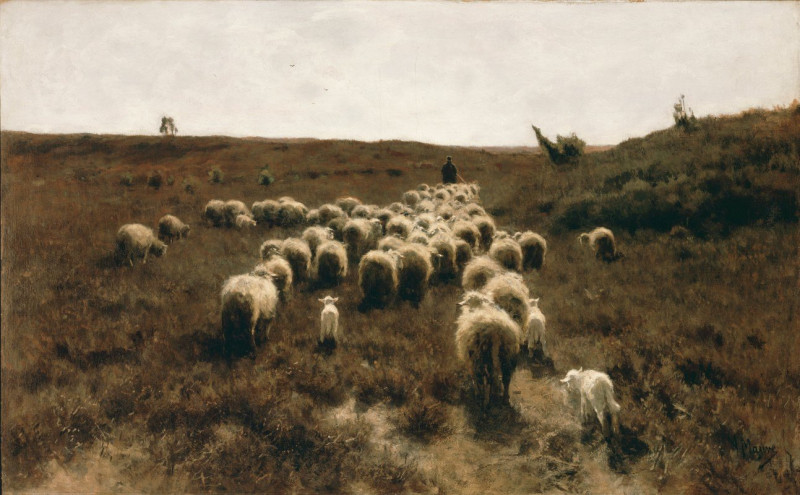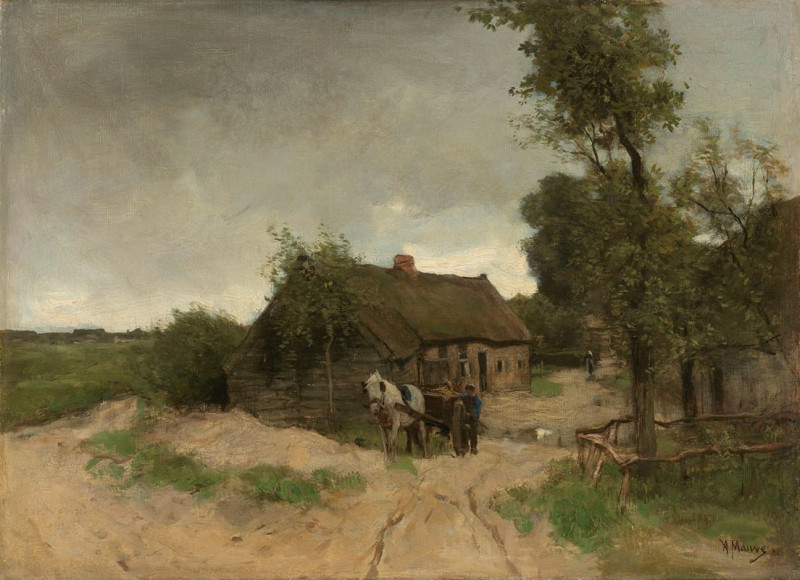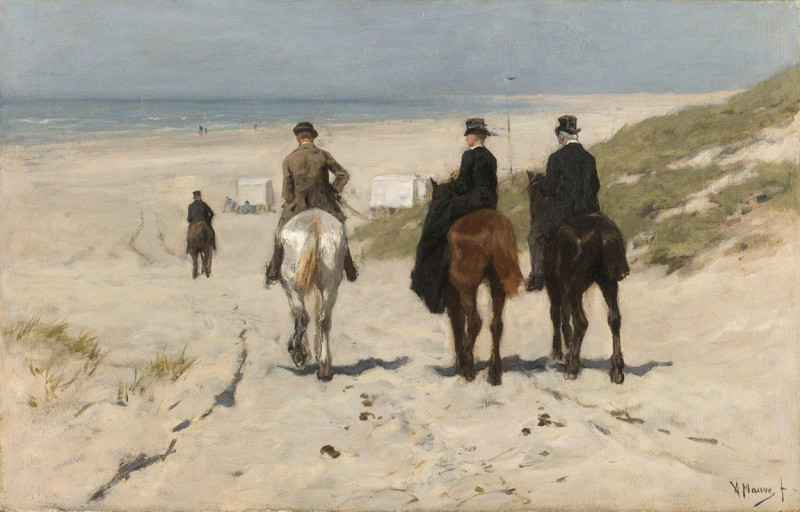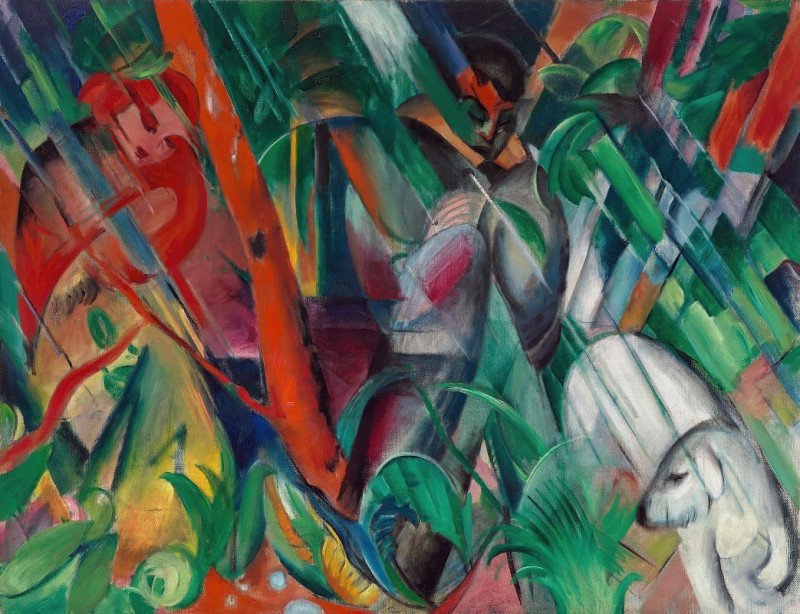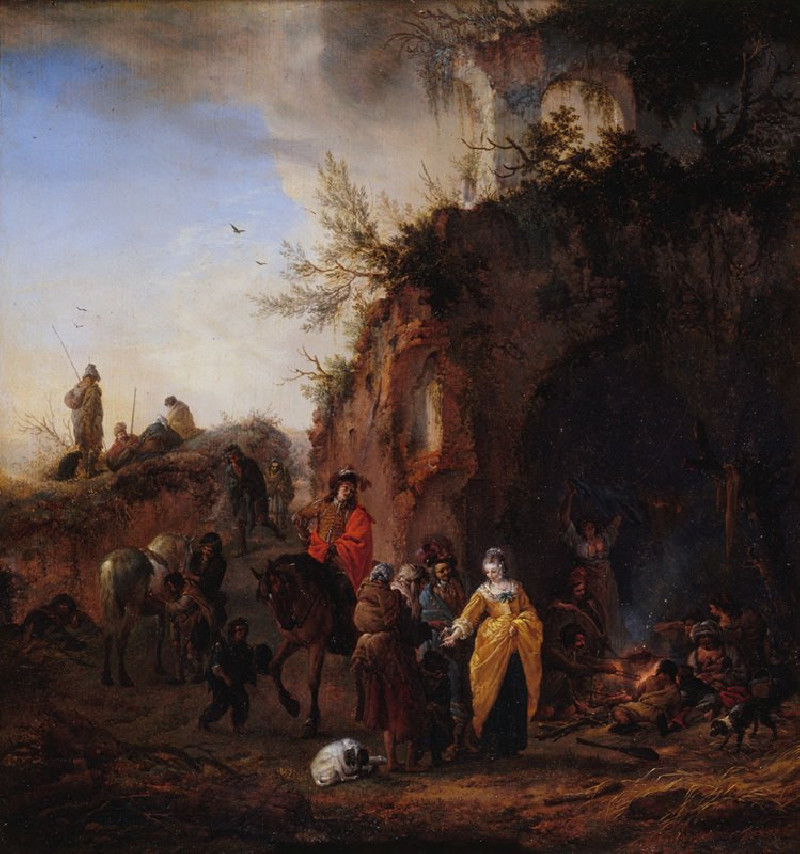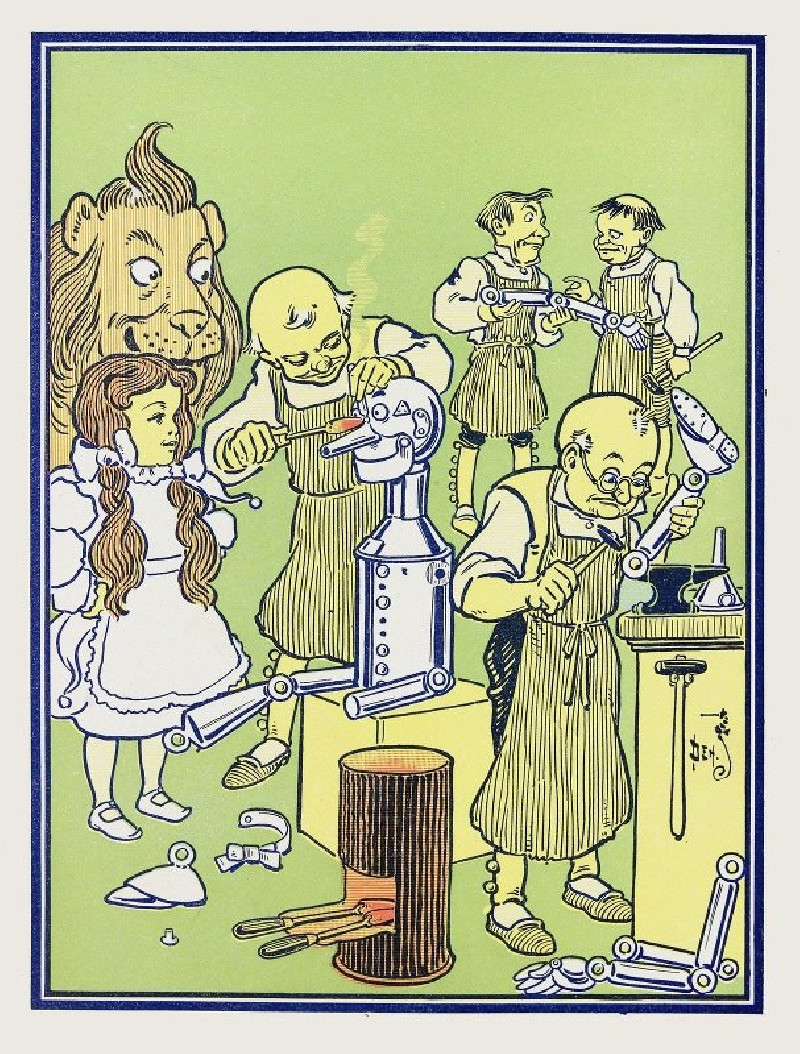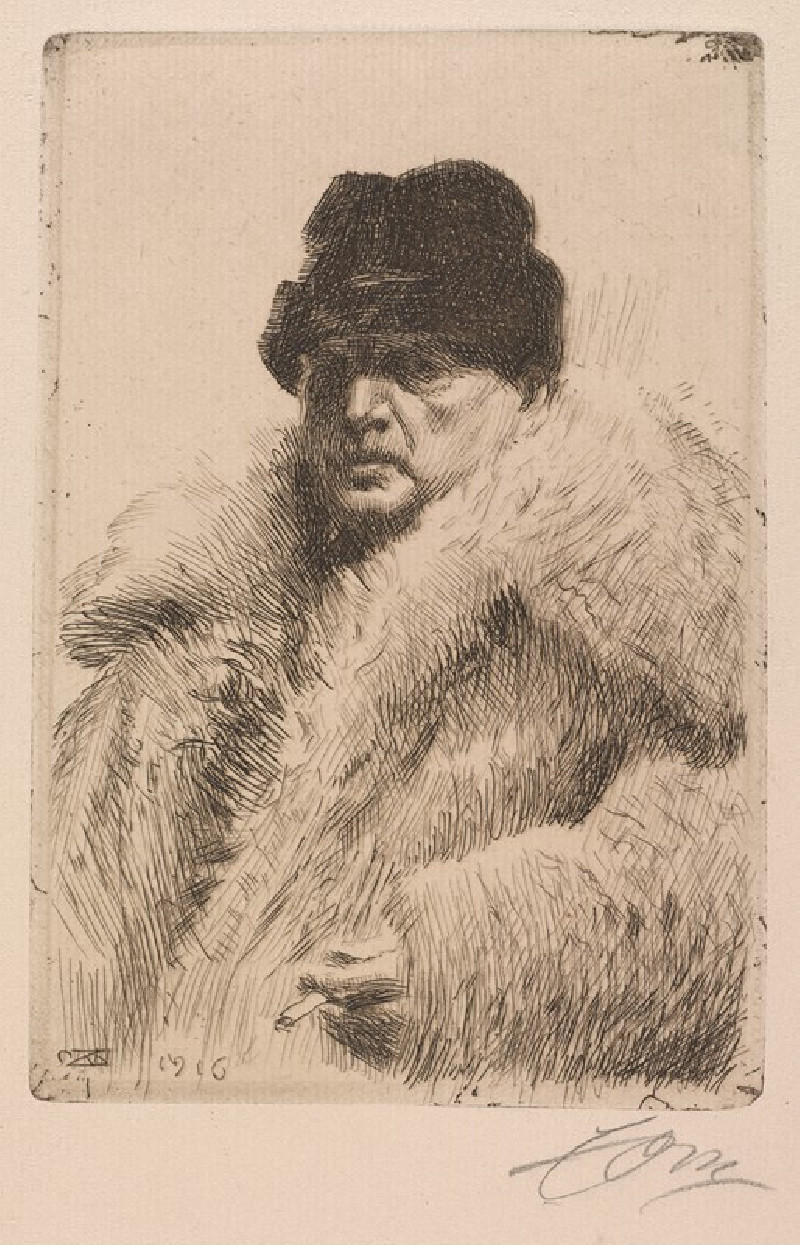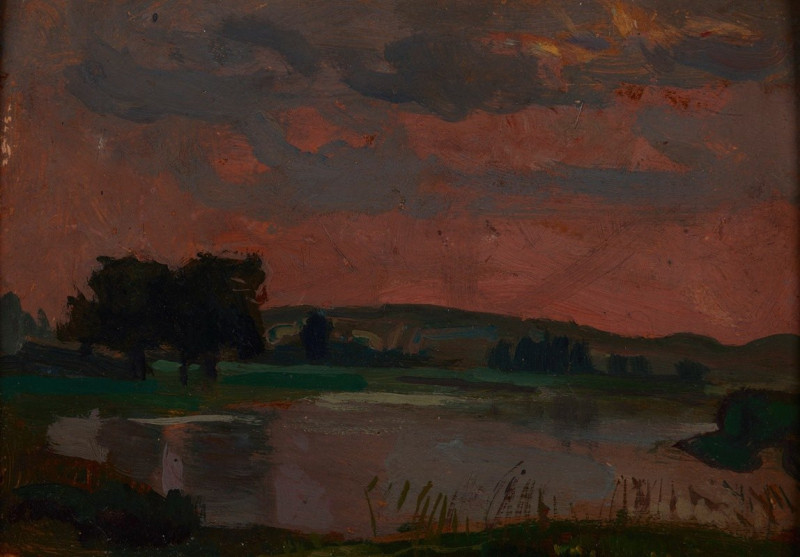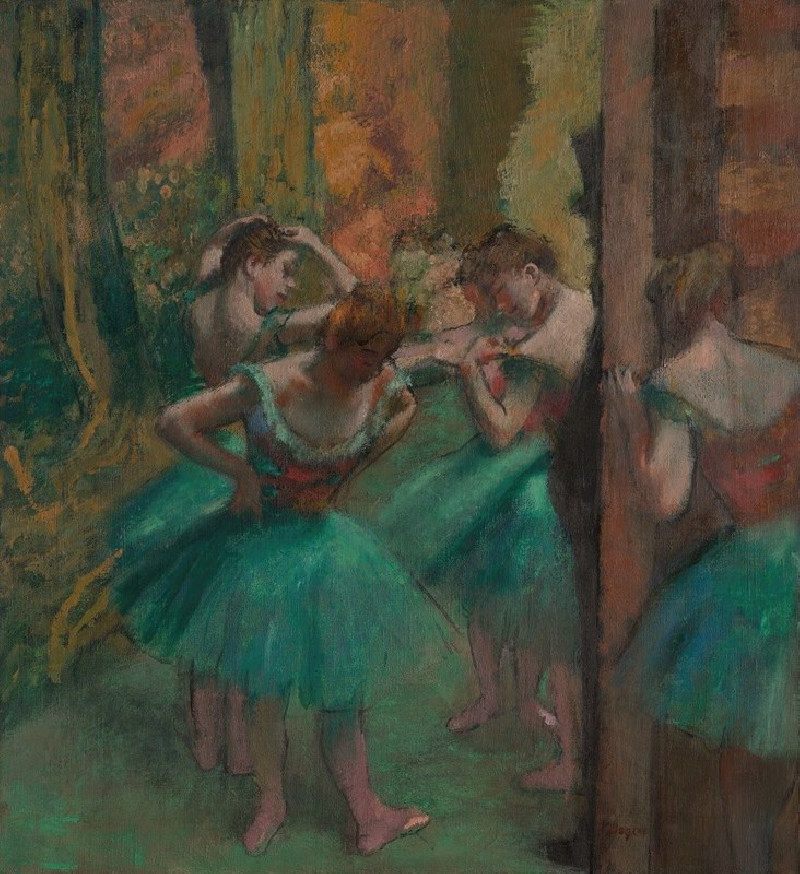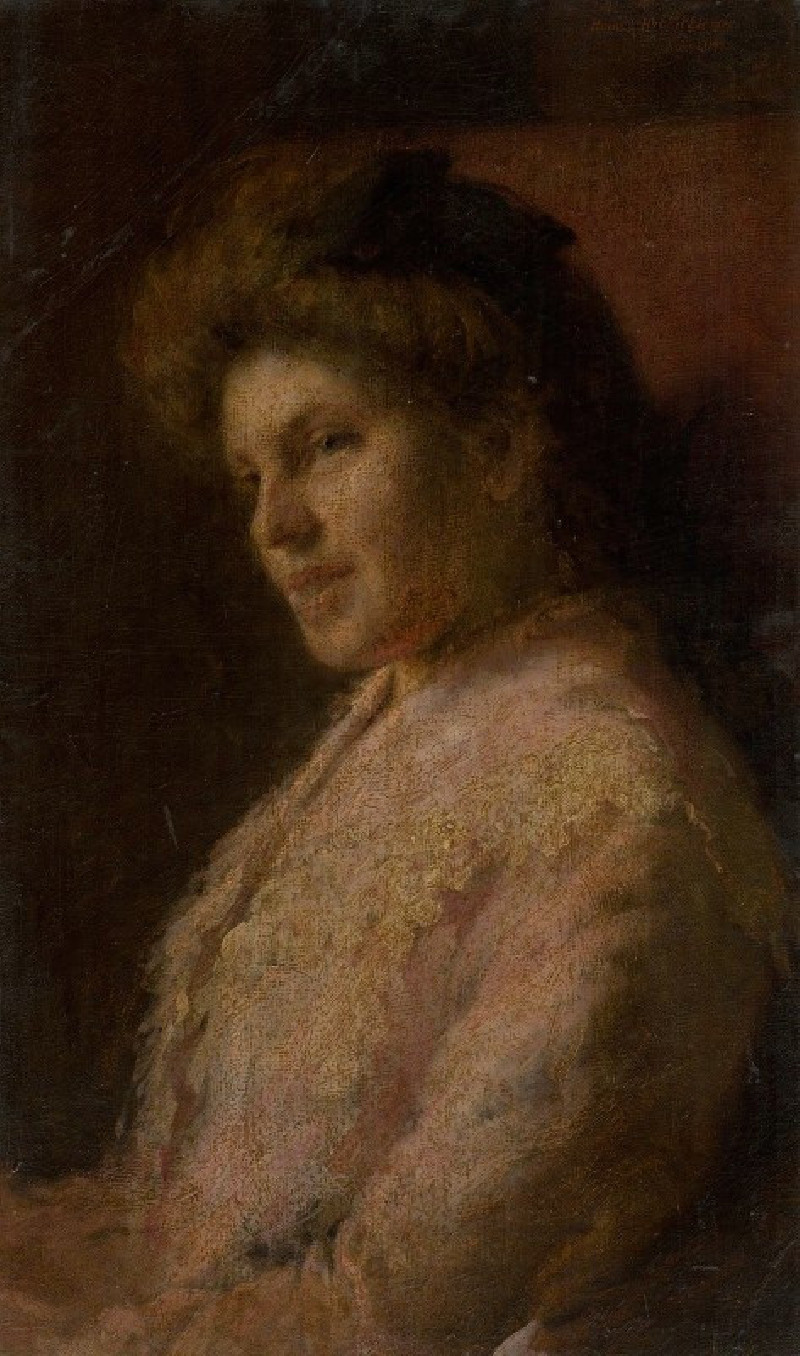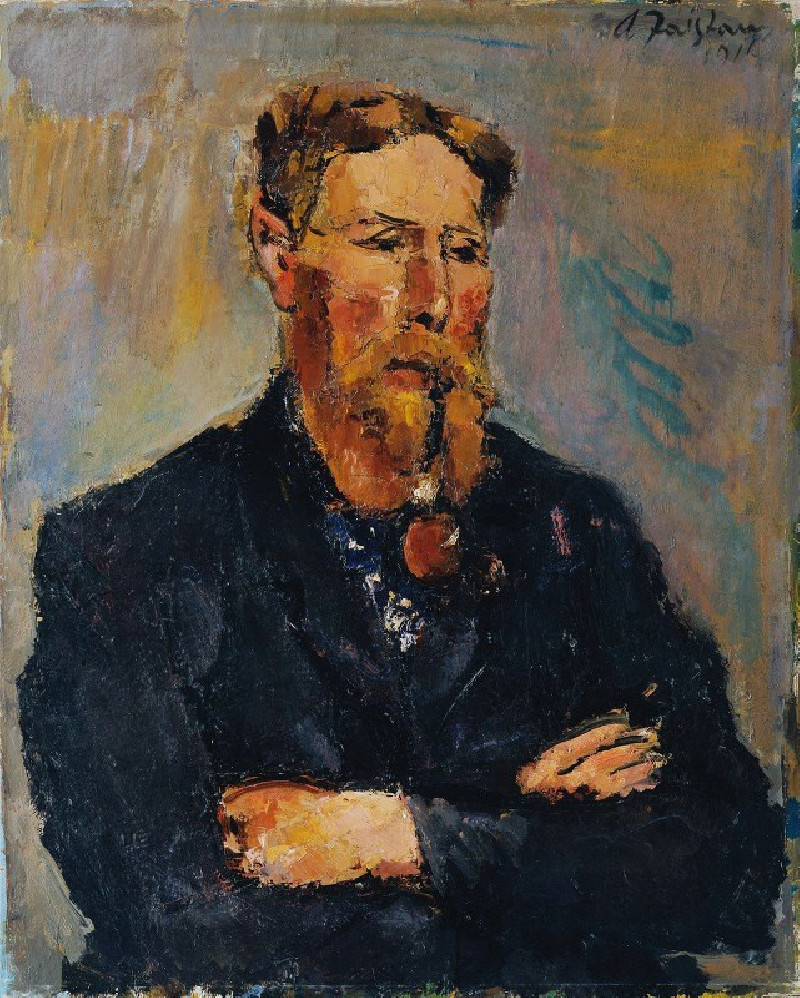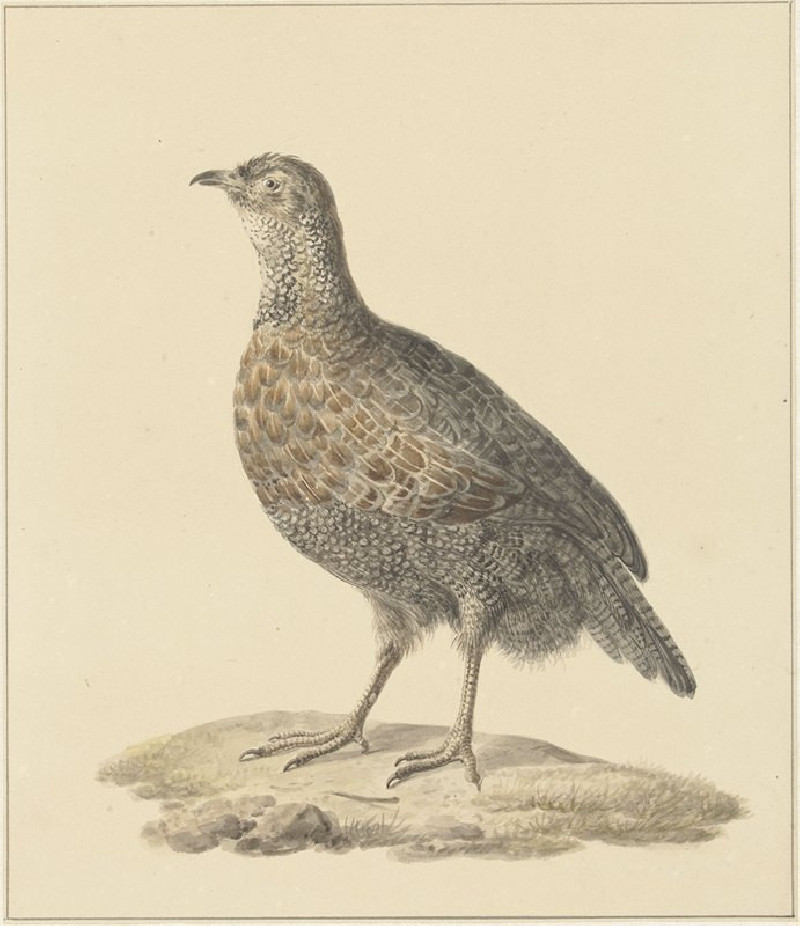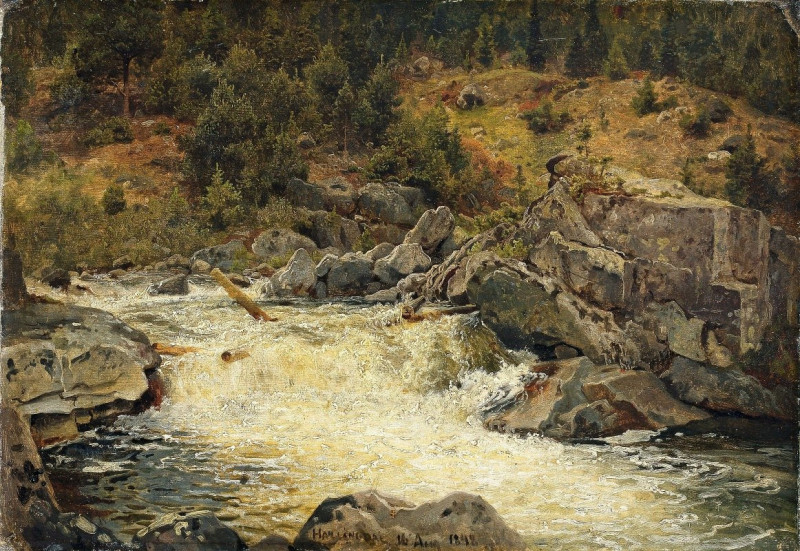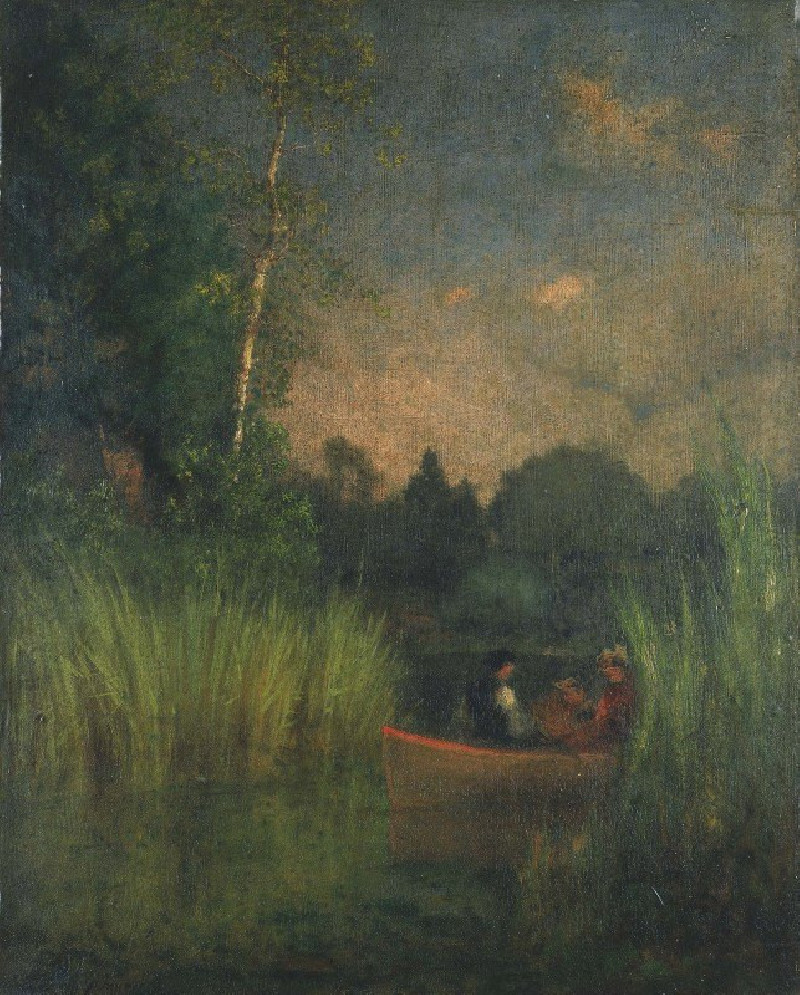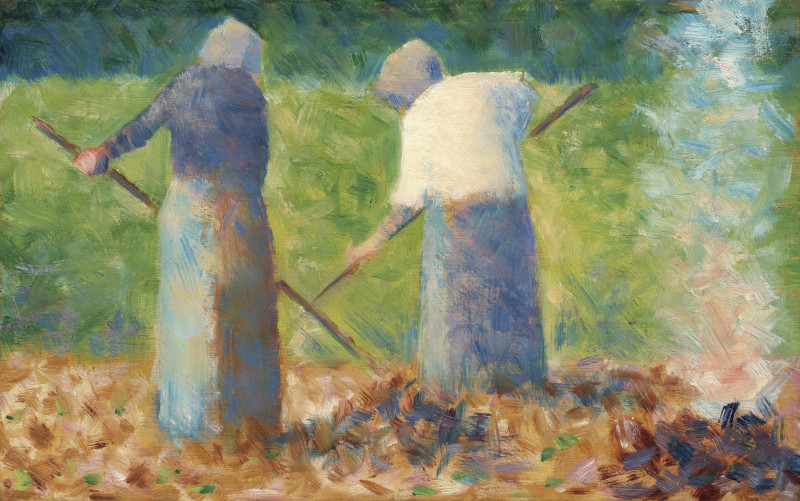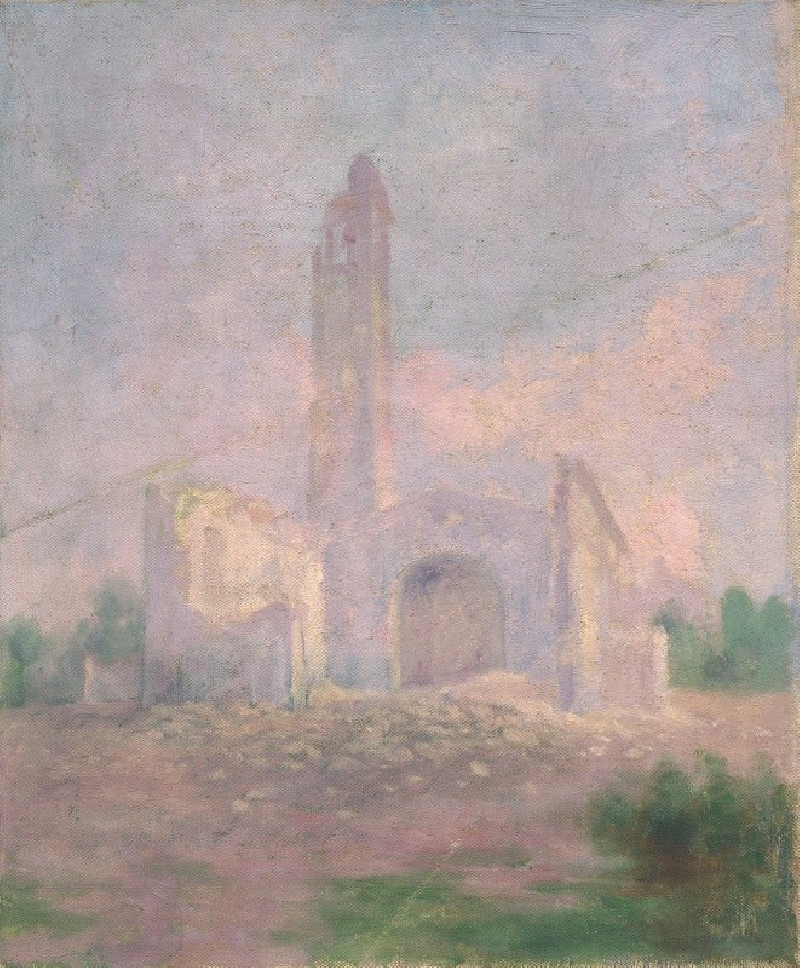The Malllejan (1848 - 1888)
Technique: Giclée quality print
Recommended by our customers
More about this artwork
"Experience the tranquility and gentle harmony of Anton Mauve's masterpiece, 'The Malllejan' (1848-1888), a painting that beautifully captures the essence of rural life in the 19th century. This evocative artwork showcases Mauve's deep connection with nature and his refined skill in depicting light and atmosphere.The scene unfolds in a serene woodland, where the soft, muted tones of a hazy sky blend seamlessly with the bare, leafless trees, evoking a sense of quiet and introspective solitude. The central focus of the piece is a traditional horse-drawn cart, laden and stationary, suggesting a moment of pause in the day's labors. Two horses, calm and steadfast, stand attached to the cart, overseen by figures who appear absorbed in their tasks. One individual, wearing a bright blue jacket, interacts directly with the earth, reflecting the human reliance on and interaction with nature.Mauve's meticulous attention to detail—seen in the texture of the tree bark, the uneven ground scattered with leaves, and the understated expressions of the figures—invites viewers to ponder the daily lives of those who lived in close concert with the land. This painting is not just a visual journey, but a reflective prompt about the rhythms of rural life and the timeless bond between humans and their environment.'The Malllejan' stands as a testament to Anton Mauve’s artistic prowess and his ability to convey profound narratives through subtle, yet powerful, visual expressions.
Delivery
Returns
Anthonij "Anton" Rudolf Mauve (18 September 1838 – 5 February 1888) was a Dutch realist painter who was a leading member of the Hague School. He signed his paintings 'A. Mauve' or with a monogrammed 'A.M.'. A master colorist, he was a very significant early influence on his cousin-in-law Vincent van Gogh.
His best-known paintings depict peasants working in the fields. His paintings of flocks of sheep were especially popular with American patrons, so popular that a price differential developed between scenes of "sheep coming" and "sheep going".

